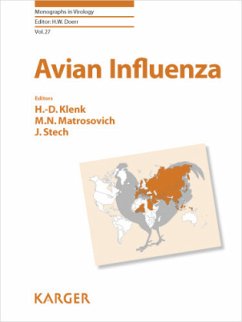Because of its high impact on both animal and human health, avian influenza has become a matter of increasing public concern and growing scientific interest within the last decade. This volume gives an overview of the most important results of these research efforts and provides information about the ecology and epidemiology of avian influenza with particular emphasis on recent H5N1 outbreaks in China, Siberia and Europe. Several articles deal with new vaccination strategies, the use of antivirals and other control measures to combat outbreaks of avian influenza. Further chapters illustrate that molecular biology, culminating in the generation of influenza viruses by recombinant DNA technology, was instrumental in unravelling the roles of the viral hemagglutinin and polymerase as well as cellular signalling pathways and innate immunity in pathogenesis and interspecies transmission. Finally, the threat of a pandemic originating from avian influenza viruses is illustrated by the example of the Spanish influenza of 1918. This comprehensive publication on avian influenza viruses and their relevance for human influenza will be of great value to all influenza virologists, molecular biologists, public health scientists, veterinary virologists, ecologists, and scientists engaged in drug design and vaccine development.
